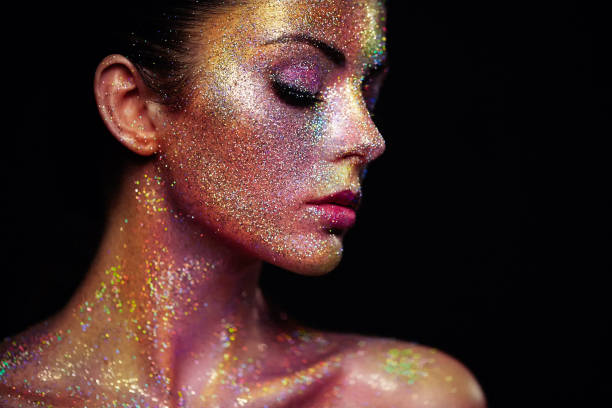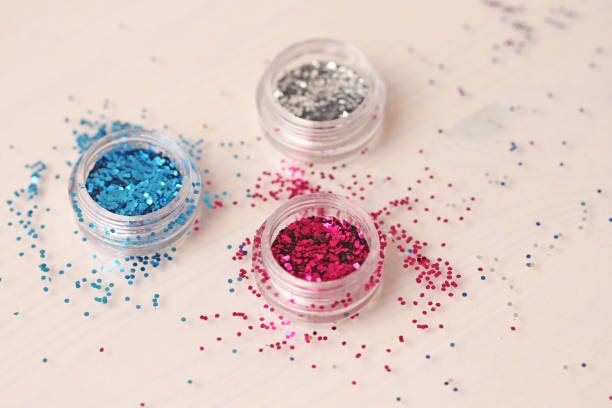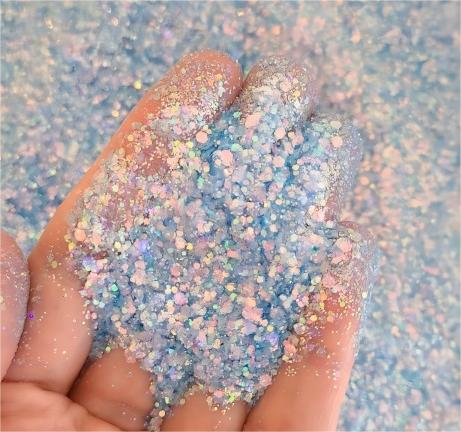According to the Italian newspaper La Repubblica, starting from October 15, it will be prohibited to sell cosmetics (such as nail polish containing glitter, eye shadow, etc.), detergents, toys and medicines that contain intentionally added microplastics and release them during use.
In a 2021 report developed by the United Nations Environment Program, warnings have been issued that chemicals present in microplastics can have serious health effects, causing damage to brain development and may even cause genetic changes, among other health problems. Based on this, the European Union has issued a ban on the sale of glitter, aiming to reduce the spread of microplastics in the environment by at least 30% before 2030.
The "plastic ban" comes into effect, and glitter and microbeads will gradually withdraw from the stage of history
From October 16th, in response to the European Commission's latest regulation to limit microplastic pollution, cosmetic bulk glitter and sequins will gradually disappear from the shelves of stores across the European Union, and this has triggered an unprecedented wave of glitter purchases in Germany.
Currently, the first restrictions under the new rules are on loose glitter and sequins, as well as microbeads in some beauty products such as exfoliants and scrubs. For other products, the ban will take effect after 4-12 years respectively, allowing affected stakeholders sufficient time to develop and move to alternatives. Among them, the ban on plastic microbeads in cleaning products will take effect in five years, and the period for products such as lipstick and nail polish will be extended to 12 years.
The measure follows the publication of a regulation by the European Commission on September 25, which is part of the European registration, authorization and restriction of chemicals regulation REACH. The goal of the new regulations is to regulate all synthetic polymer particles smaller than 5 mm that are insoluble and resistant to degradation.
Thierry Breton, the European Commission's internal market commissioner, said in an EU press release: "This restriction promotes the green transition of EU industry and promotes innovative microplastic-free products from cosmetics to detergents to sports surfaces."
Judging from the general trend of banning, it is only a matter of time before the use of plastic microbeads is restricted across all categories, and the globalization of this measure will promote the cosmetic industry's development towards standardization, safety and sustainability.

Environmental protection is the general trend, and cosmetics companies are accelerating their transformation and upgrading
Public information shows that the global cosmetics industry produces at least 120 billion packages every year, of which plastics account for the majority. The environmental impact caused by the disposal of these packages accounts for 70% of the industry's carbon emissions. In recent years, multiple studies have found traces of microplastics in pets’ stomachs, tap water, plastic bottles, and even clouds and breast milk.
With the strengthening of global environmental awareness, consumers have put forward new requirements for daily chemical products, and natural, natural and multi-effects have become the trend. This also puts forward higher requirements for R&D personnel. First, the formula engineer must readjust the formula to reduce the impact of removing plastic microbeads on product performance; second, the development and innovation of raw materials must find suitable alternative raw materials and focus on development. Biodegradable and recyclable raw materials from natural sources replace environmentally unfriendly plastic microbeads, while developing multifunctional or more functional raw materials to replace plastic microbeads with a single function.
In order to promote the sustainable development of the cosmetics industry, many responsible companies have been exploring the entire industrial chain of production and manufacturing. For example, use renewable resources as raw materials; adopt more environmentally friendly production preparation methods or preparations during the production and preparation process; use innovative recyclable, degradable or compostable materials for packaging.

Topfeel is also actively exploring this aspect. We have always focused on technological innovation and sustainable development, and constantly introduce new products and solutions that meet market needs.
Post time: Nov-01-2023


